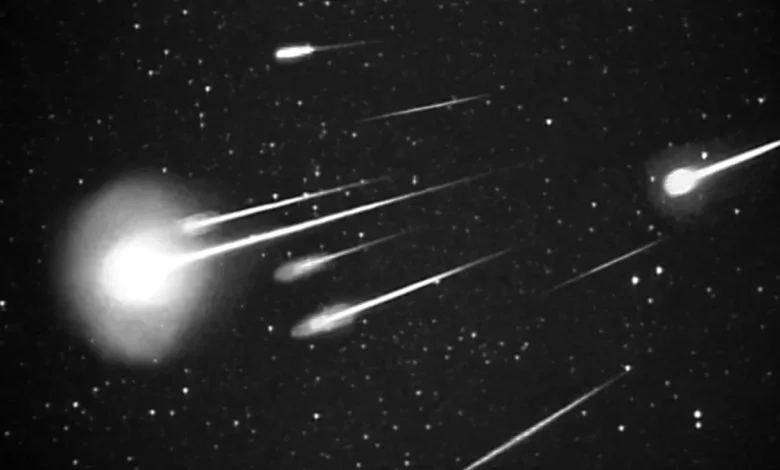Northern Taurid meteor shower peaks tonight: When, where, how to see fireballs in the sky

Top astronomy events for November 2025
From two meteor showers to the second supermoon of the year, here are the top astronomy events to mark down on your November 2025 calendar.
The Northern Taurid meteor shower 2025 will peak tonight, Nov. 11-12 with shooting stars and bright golden fireballs streaking across the sky — for two nights — against the darkness of a Waning Gibbous moon phase.
The Taurids are known to be a slow, but colorful meteor shower, caused by debris from Comet Encke, with noticeably larger fragments than those shed by other comets, which is why this meteor stream sometimes delivers a few bright “fireballs,” according to Space.com, at a rate of 5-10 per hour or up to 15 at its peak.
There are two active Taurid meteor showers right now — the Southern Taurids and the Northern Taurids. Both named Taurid because “both streams radiate from the constellation Taurus the Bull, not far from the bright star Aldebaran and the tiny, misty, dipper-shaped Pleiades,” according to EarthSky.
The Southern Taurids reached their peak on Nov. 4-5, but are still active through Nov. 20, 2025, overlapping the Northern Taurid peak this week and the popular Leonids, which started on Nov. 6.
Here’s when to see, where to look, how to watch and what to know about all the November 2025 meteor showers.
What is a meteor shower?
A meteor shower is celestial event that happens when Earth passes through the path of a comet or the trail of debris left by a comet or asteroid during its orbit around the sun. The debris is called meteoroids.
Meteoroids enter the Earth’s atmosphere at high speeds and burn up, streaking the sky with bright moving lights, like a “shooting star” from what appears to be a single point in the sky, called the radiant. They range in size from dust-like particles to boulder size.
These meteor showers are named for the constellation where the meteors appear to be coming from.
The best time of day to see a meteor shower is around midnight according to Space.com, it’s best to go to the “darkest possible location, and wait about 30 minutes for your eyes to adjust to the dark.”
When to watch the Northern Taurid meteor shower 2025 peak?
The Northern Taurid meteor shower is active from Oct. 20 to Dec. 10, 2025 and will peak on the night of Nov. 11-12, Tuesday. However, the Wednesday night may be the best night to watch, as there will be about four hours of dark, moonless skies to look for Taurids. The moonrise will come after midnight in the early Thursday morning hours.
Each night, up until the moon appears above the horizon, up to 15 Taurid meteors may appear per hour during it’s peak, appearing yellowish-orange as the radiate from the constellation Taurus, the Bull, which sits low in the east a couple of hours after sundown and is almost directly overhead by around 1:30 a.m., according to Space.com.
While similar to the Southern Taurids, the overlap in the two meteor showers can produce double the blazing fireball display in the sky leading up to its’ peak as the Leonids start to kick up with ultra-fast streaks of light appearing to come from the constellation Leo.
How to watch the Northern Taurid meteor shower 2025?
This year’s Taurid meteor shower peak falls during ideal conditions in that tonight’s Waning Gibbous moon phase will be a dark sky for better visibility of bright fireballs.
Find a dark, rural spot away from city lights and give your eyes 20-30 minutes to adjust to the dark and then look anywhere in the sky, although the meteors will radiate from Taurus.
The best time to see meteors is after midnight until dawn on Tuesday and Wednesday nights, Nov. 11-12.
When will the Leonid meteor shower 2025 start?
The popular Leonid meteor shower display of shooting stars that light up the skys started on Nov. 6, lasting through the 30th and peak on the morning of Nov. 18th. They are named Leonids because their meteors appear to come from the constellation Leo.
The Leonids are a result of the comet Tempel-Tuttle’s melting particles that disintrigrate as it passes close ot the Sun during its orbit, leaving a trail of debris roughly the size of grains of sand or smaller, according to the Almanac. Earth travels through this debris field every year, hence the annual Leonid meteor shower.
The best time to watch the Leonids this year will be on the night of Nov. 17 against the dark sky and waning crescent moon, making for great views. They average a typical 10 to 15 shooting stars per hour or more.
What are the current moon phases?
🌕 Full Moon: Nov. 5🌗 Last Quarter: Nov. 12🌑 New Moon: Nov. 20🌓 First Quarter: Nov. 28🌕 Full Moon: Dec. 4
When is the December full moon 2025?
The December full moon of 2025, the cold supermoon, will occur on Thursday, Dec. 4, 2025.
When is winter solstice 2025?
The winter solstice will bring us the shortest day of the year on Sunday, Dec. 21, 2025, with approximately 9 hours, 17 minutes of daylight.
To check how many hours of sunlight you’ll get and the sunrise/sunset times in your area, click here.
Maria Francis is a Pennsylvania-based journalist who covers trending topics across the Mid-Atlantic region.




